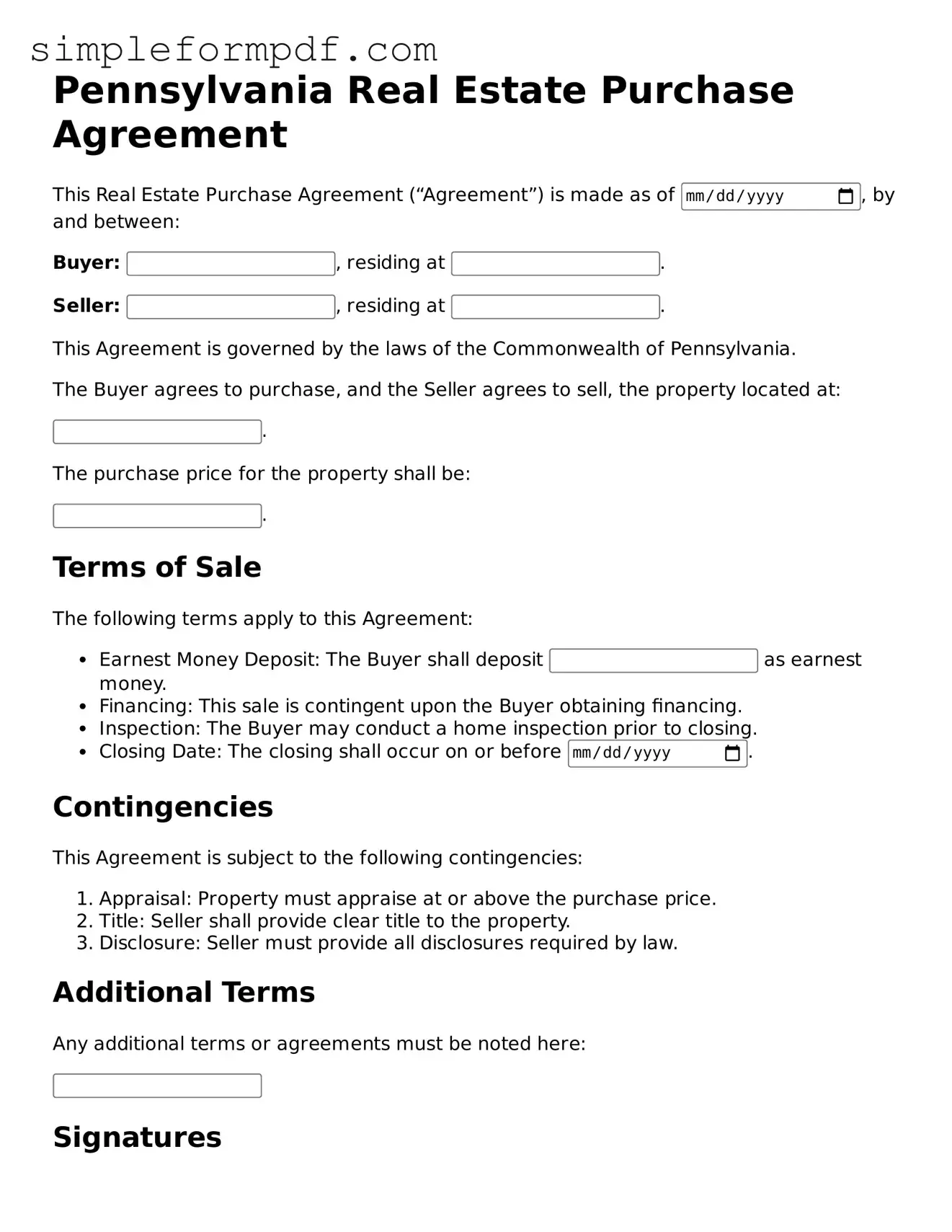Free Real Estate Purchase Agreement Form for the State of Pennsylvania
The Pennsylvania Real Estate Purchase Agreement is a legal document used to outline the terms and conditions of a real estate transaction between a buyer and a seller. This form serves as a binding contract, ensuring that both parties understand their rights and obligations during the sale process. For those looking to navigate the real estate market, completing this form accurately is essential; click the button below to get started.
Launch Editor
